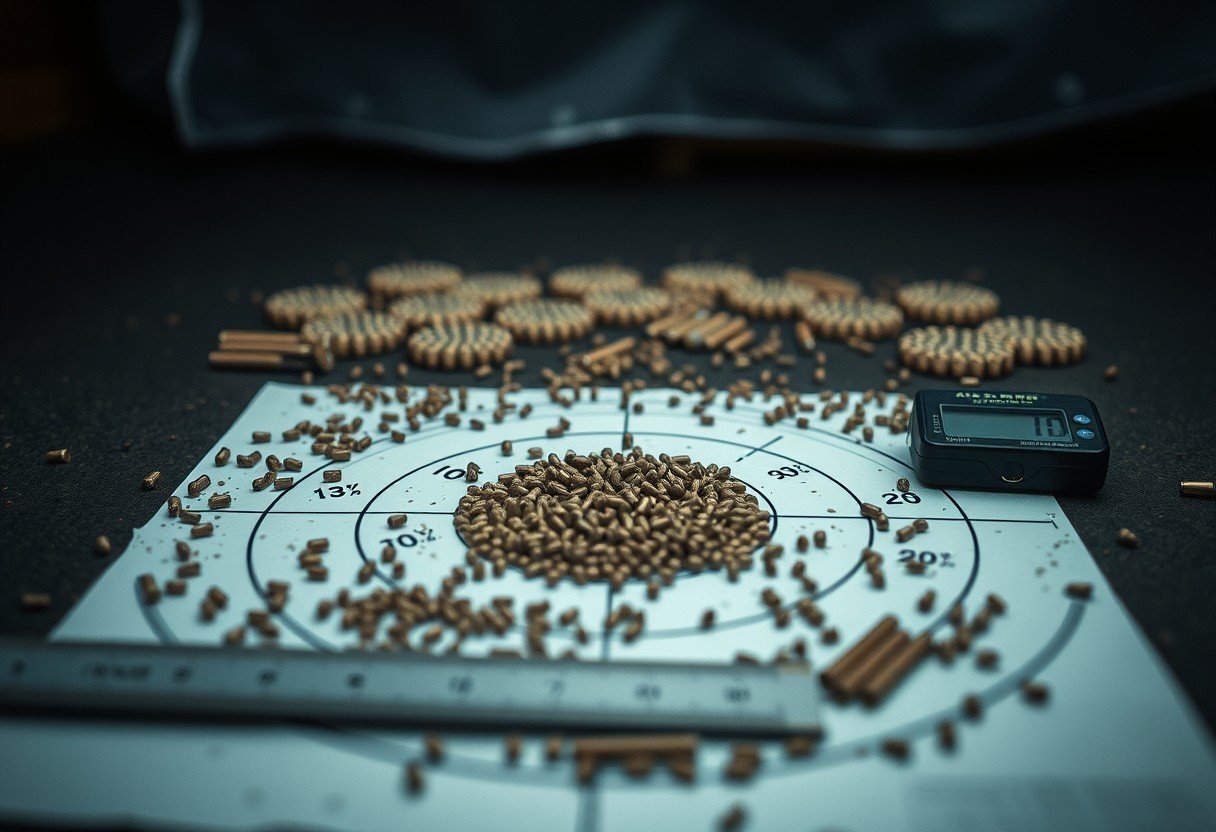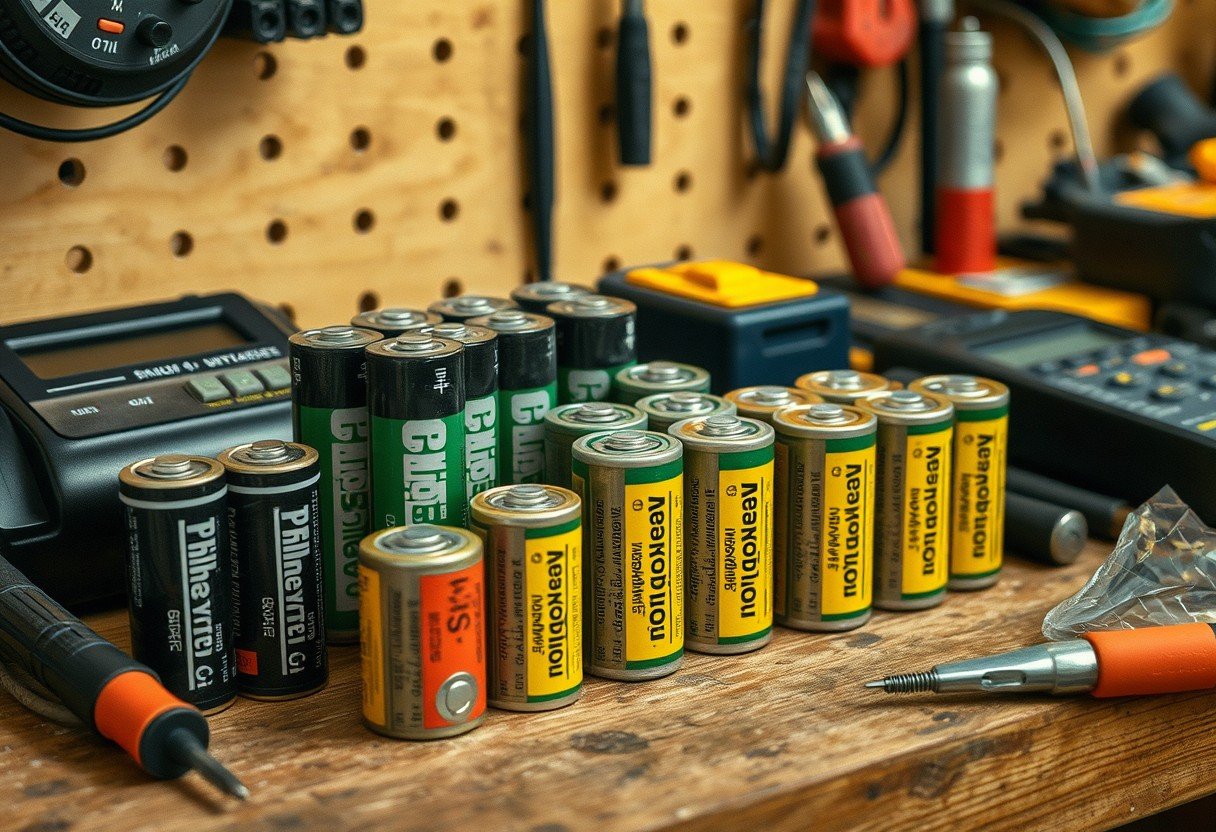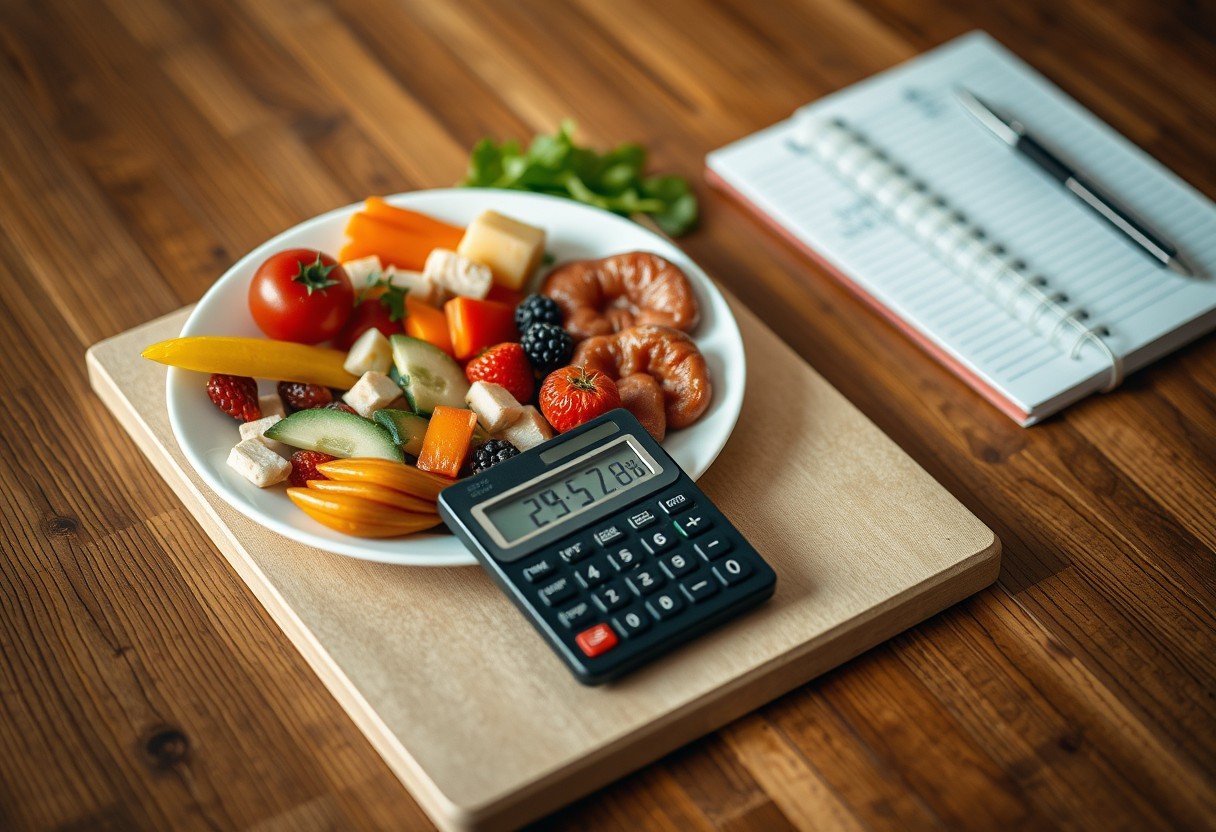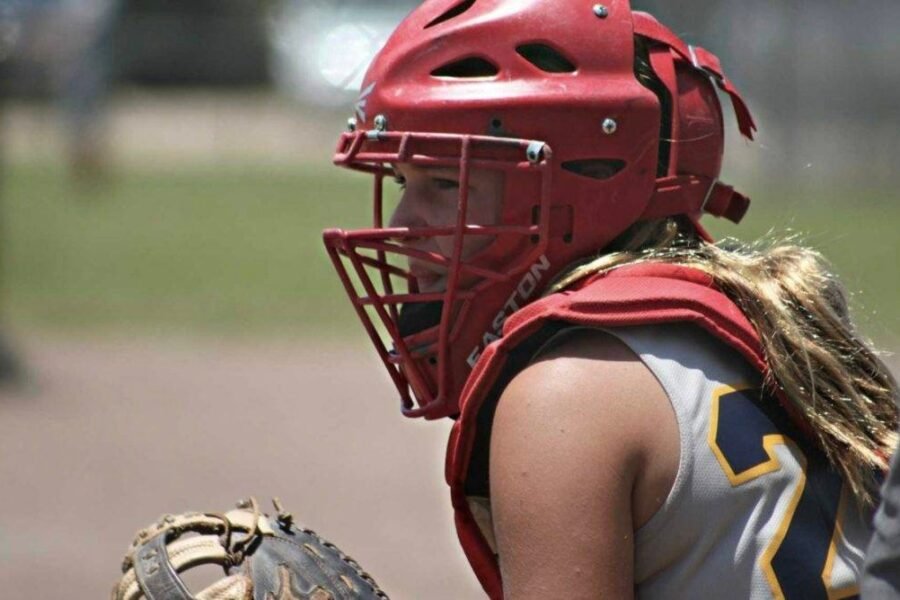There’s a crucial aspect of shotgun shooting that every enthusiast needs to understand: the importance of patterning. By determining how many pellets from your chosen load will hit a designated target area, specifically a 30-inch circle, you can significantly improve your accuracy and effectiveness in the field. This post will guide you through the optimal percentage of pellets you should aim for within that circle, allowing you to fine-tune your shotgun for improved performance in various shooting scenarios.
Key Takeaways:
- Effective Pattern Density: A minimum of 60% of pellets within a 30-inch circle is generally considered effective for hunting applications.
- Assessment of Shells: Different shell types and shot sizes will yield varying pattern densities; experimentation is key to finding the right combination.
- Choke Impact: The choice of choke can significantly affect pellet distribution; tighter chokes generally improve pattern density.
- Consistency: Regularly patterning your shotgun helps maintain consistent performance and adaptability to changing conditions.
- Hunting Situation: Depending on the type of game and hunting environment, the desired pellet percentage may vary; adjust expectations and practices accordingly.
Understanding Shotgun Patterns
While mastering shotgun shooting requires knowledge of various elements, understanding shotgun patterns is crucial for improving your accuracy and effectiveness in the field. A shotgun’s pattern refers to the distribution of pellets after firing, which can significantly influence your success in hitting moving targets such as birds or clay pigeons. By examining how your shotgun patterns, you can make necessary adjustments to enhance your shooting performance.
Definition of Patterning
Understanding the term patterning involves recognizing it as the process of assessing how a shotgun’s shot disperses over a specific distance. This pattern can be evaluated by firing shots at a target, often a 30-inch circle, which allows you to determine the effectiveness of your chosen ammunition and choke combination. Analyzing this information is key to becoming a more consistent shooter.
Importance of a 30-Inch Circle
Importance of a 30-inch circle lies in its significance as a standard measurement for evaluating shotgun patterns. This size mimics the typical area needed to effectively hit a bird or moving target, giving you a realistic gauge to assess your performance. By concentrating on how many pellets land within this circle, you can determine if your setup is adequate for your shooting needs.
A 30-inch circle is widely accepted in the shooting community because it represents a practical target size when aiming for game. When you pattern your shotgun and find a sufficient percentage of your pellets within this circle, it suggests that your firearm is capable of delivering an effective shot at typical engagement distances. This understanding allows you to refine your choice of ammunition and chokes, ultimately improving your hunting or shooting experience.
Factors Influencing Pellet Distribution
You should consider several factors that impact how pellets distribute when firing a shotgun. Understanding these variables can enhance your overall shooting accuracy and effectiveness:
- Shot Size
- Distance to Target
- Environmental Conditions
- Barrel Length
- Type of Load
After assessing these factors, you can better predict how effective your shotgun will be in striking a target within your desired range.
Choke Types and Their Effects
You should familiarize yourself with different choke types as they significantly impact pellet distribution. Here’s how various chokes influence performance:
- Full Choke
- Modified Choke
- Improved Cylinder Choke
- Open Choke
- Rifled Choke
The choice of choke plays a crucial role in determining the spread and density of your shot pattern.
| Choke Type | Pellet Spread |
| Full Choke | Narrowest Spread |
| Modified Choke | Moderate Spread |
| Improved Cylinder | Wider Spread |
| Open Choke | Widely Dispersed |
Ammunition Choices
The type of ammunition you choose can drastically impact your shotgun’s performance and pellet distribution. Different loads have varying characteristics that affect shot patterns.
Understanding your ammunition options—including gauge, shot size, and load type—will empower you to make informed decisions tailored to your shooting style and intended application. Factors to consider include the weight of the shot, the composition of the shot, and whether the load is specially designed for specific environments or types of game. By aligning your ammo choice with the conditions you expect to encounter, you can optimize your shotgun’s effectiveness.
Measuring Shotgun Patterns
Now that you understand the importance of determining your shotgun’s pattern, it’s time to measure it effectively. Measuring your shotgun’s pattern involves firing at a target and analyzing the distribution of pellets within a designated area, usually a 30-inch circle. This process helps you assess whether your shotgun is performing at its best for hunting performance or target shooting accuracy.
Techniques for Accurate Measurement
One effective technique for accurate measurement involves using a consistent distance from your target. You should position yourself 40 yards away and use a large, contrasting paper target to clearly visualize the pellet distribution. Additionally, ensure that the target is placed securely to prevent movement during the firing process, which could skew your results.
Tools and Equipment Needed
Equipment plays a crucial role in accurately measuring your shotgun’s pattern. You will need items such as a measuring tape, a sturdy target stand, and a reliable shotgun rest for stability during shooting. Collecting the right tools ensures that you get precise measurements of your shotgun’s performance when testing different chokes and loads.
Tools necessary for measuring shotgun patterns include a clean, large roll of butcher paper and a permanent marker for marking the center of your target. A shotgun rest will help stabilize your firearm while you fire, enhancing accuracy and consistency. Also, consider using a spotting scope to observe the target from a distance without having to walk back and forth, making your measurement process more efficient and precise.
Evaluating Sufficient Pellet Percentage
After establishing a methodology for patterning your shotgun, it’s crucial to evaluate the sufficiency of pellet distribution within the 30-inch circle. A higher percentage of hits indicates a more effective load or choke combination, allowing you to make informed adjustments. Understanding what constitutes an adequate pellet percentage can help enhance your accuracy and overall performance in the field.
Industry Standards and Recommendations
Standards in the shooting community suggest that a minimum of 60-70% pellet density within a 30-inch circle offers a reliable performance for most shotgun applications. When aiming for precision in hunting or sport shooting, adhering to these benchmarks can enhance your effectiveness, ensuring the likelihood of a clean and humane kill.
Personal Preferences and Variability
On the other hand, personal preferences and individual shooting styles significantly influence your ideal pellet percentage. Some shooters may prioritize a more expansive spread for less controlled situations, while others may demand tighter patterns for precision-targeted shooting.
Percentage can vary based on factors such as the type of game being hunted, shooting distance, and personal shooting technique. Your comfort level with recoil and the specific conditions of your shooting environment may also play a role in determining what you consider sufficient. Ultimately, it’s vital to assess your own shooting needs and adjust accordingly to find the ideal pellet distribution that works best for you.

Common Myths and Misconceptions
Your understanding of shotgun patterning may be clouded by several common myths. Many shooters believe that a higher percentage of pellets in a 30-inch circle guarantees successful shot placement, or that all shotguns pattern the same way. These misconceptions can lead to frustration in the field and undermine your confidence when it comes to making effective shots.
Debunking Popular Beliefs
Debunking the belief that a “perfect” pattern—often cited as above 70%—is necessary for success ignores the reality of hunting. In various situations, even a lower percentage might suffice, especially in close-range encounters. A shotgun’s effectiveness is not solely reliant on numbers; technique and familiarity with your firearm matter significantly.
Real-World Implications
Real-world implications of these misconceptions can lead to wasted time and resources. You might spend endless hours attempting to perfect your shotgun’s pattern at the expense of honing actual shooting skills. Instead, understanding the true effectiveness of your shotgun in real hunting conditions can enhance your approach, allowing you to focus on shot placement over arbitrary percentage goals.
Misconceptions about the importance of a high pellet count can lead you to neglect imperative factors such as shot placement, distance, and your innate shooting ability. By recognizing these aspects, you can make smarter decisions in the field, adapting your techniques to the conditions you encounter rather than chasing an unrealistic ideal of perfect patterning.
Practical Tips for Optimal Patterning
Despite the seemingly straightforward process of patterning a shotgun, several considerations can enhance the accuracy of your results. Follow these tips to ensure optimal patterning:
- Use a consistent type and size of ammunition.
- Choose a stable shooting rest for consistency.
- Measure distances accurately for reliable results.
- Try various choke tubes to gauge their impact.
- Pattern at different ranges to visualize performance.
Recognizing these factors can significantly improve your shotgun’s effectiveness.
Pre-Patterning Preparations
Any successful patterning session begins with thorough preparations. Ensure your shotgun is clean and well-maintained for accurate results. Select a suitable ammunition type and choke, as each can drastically affect your pattern. Additionally, make sure you have sufficient space and a sturdy target setup at the appropriate distance to observe your shot placement clearly.
Post-Patterning Adjustments
Any effective patterning process should culminate in adjustments based on your findings. After reviewing your target, these adjustments can greatly enhance your shotgun’s performance. Consider altering the choke, ammunition type, or even your shooting stance to tweak your patterning outcomes.
Post-patterning adjustments are crucial for refining your shotgun’s effectiveness. Based on the results of your pattern test, determine whether you need to switch to a tighter or more open choke, or experiment with different ammunition brands, weights, or shot sizes. Fine-tuning these elements can lead to significant improvements in your shooting precision and success in the field.
Summing up
Considering all points, achieving a sufficient percentage of pellets within a 30-inch circle when patterning a shotgun typically means you should aim for at least 70% of your shot to be contained within that area for effective performance. This guideline helps ensure that you maintain an effective spread for hunting or shooting sports. Consistently hitting this benchmark can improve your accuracy and overall shooting experience, thereby enhancing your confidence as a shooter.
FAQ
Q: What is the purpose of patterning a shotgun?
A: Patterning a shotgun is vital to determine how well your chosen load and choke combination disperses pellets at a specific distance. By shooting at a target, hunters can evaluate the density and spread of the shot pattern to ensure they can effectively hit their intended target, especially in hunting or competitive shooting scenarios.
Q: What does a 30-inch circle represent in shotgun patterning?
A: A 30-inch circle is a standard measurement used in shotgun patterning to assess shot density. It simulates a target area, providing a visual representation of how many pellets within a load land in a specified area at a certain distance, typically at 40 yards, which is commonly used for evaluation.
Q: What is considered a sufficient percentage of pellets within a 30-inch circle for effective shooting?
A: Generally, for a shotgun to be considered effective, you should aim for at least 70% of the pellets from a standard load to fall within a 30-inch circle at your shooting range. This indicates a reliable and effective shot pattern for most hunting applications, providing adequate coverage of your target.
Q: How can I improve my shotgun’s pellet density within a 30-inch circle?
A: To improve pellet density, you can experiment with different ammunition types, including shot size and load weight. Additionally, changing the choke of your shotgun can significantly influence how tightly the pellets are grouped. Regularly patterning your shotgun with different combinations will help you find the optimal setup for your shooting needs.
Q: Why might a shotgun pattern inadequately under the 70% threshold?
A: Several factors can contribute to insufficient pellet density under the 70% threshold, including the wrong choice of choke for the specific load, poor shotgun fit for the shooter, or using an inappropriate shot type for the targeted species. Environmental factors, like wind or movement of the shooter, can also affect shot placement. It’s crucial to address these issues through practice and proper equipment selection.








Leave a Comment